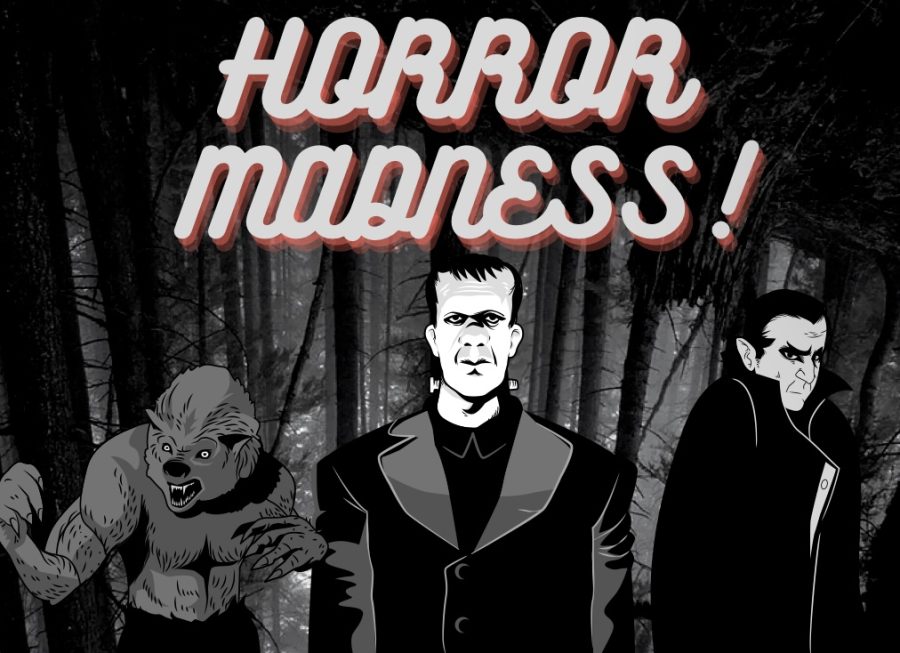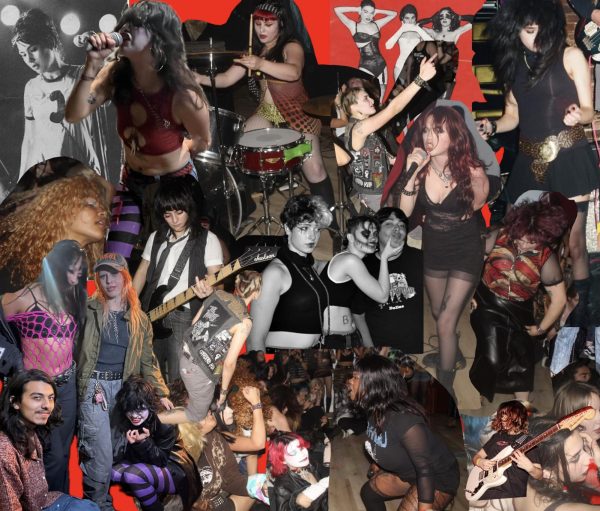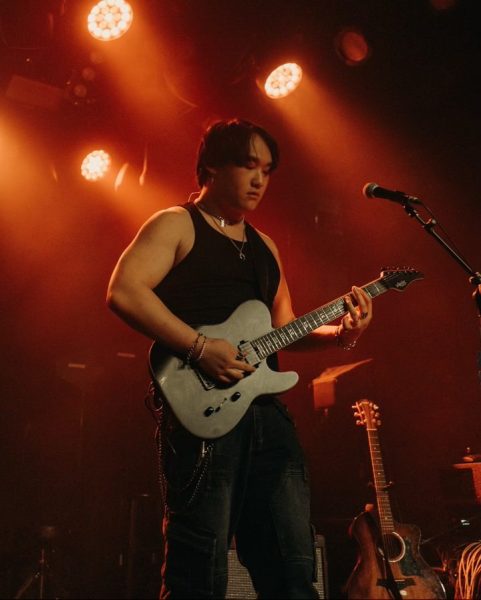In the mind of Directors: The specialty of horror films
Horror has shaped entertainment with its numerous films, but how does it feel special?
Readers, beware, you’re in for a scare. The terror of horror films has shaped the minds of many and brought dread and terror into all those who have seen a hint of horror in their lives.
Horror films dwell in the depths of the average person’s mind unlocking their worst fears and terrifying possibilities.
The genre has existed for centuries and can still create suspenseful and horrifying stories on big and small screens.
The earliest horror film set the tone and feel of these types of film is the 1922 film “Nosferatu.” The film has no sound but can give the audience a sense of fear from the film’s central monster.
Over the years, we saw horror films becoming well-enjoyed by many. In terms of revenue, “It” (2017) holds the number one spot of top-grossing horror films domestically, according to Forbes.
But what makes the genre unique for others to sit and enjoy? Two directors who have seen and made horror films share their thoughts on why this genre is as successful.
History with Horror
With many film directors, there are often beginnings that shape them to create horror films. For example, it could be movies that shaped their love for cinema or directors that helped inspire them to make movies akin to said directors.
Alejandro Brugues, a writer and director, has been directing for 17 years. Learning to direct in his home country, Cuba, he created films like “Juan of the Dead” (2010), and “Satanic Hispanics” (2022).
Brugues loved horror as a child watching. “What inspired me to become a filmmaker was mainly Spielberg; I grew up watching ‘Jaws,’ and ’Indiana Jones,’ that kind of thing,” Brugues said. “Then later in the ‘90s, Quentin Tarantino appeared on the scene. It kind of blew me away.”
Alan Bloom, a Cal State LA professor, specializing in film and video production, has directed, written, and produced over 300 films in the last 52 years.
“What inspired me in the ‘60s was Stanley Kubrick (The Shining, 1980), Alfred Hitchcock (Psycho, 1960), and Federico Fellini(Spirits of the Dead, 1968),” Bloom said. “They were the major director’s movie-making artists in that era.
Both directors hold these films and people in high regard and learned what they did to direct/teach them to many audience members and future film majors. These are from the recent movies that Brugues has done with “Satanic Hispanics” and the abundance of lectures Bloom gives.
What makes it special
Bloom has said that horror has been a part of film history, that the idea of horror or inducing fear in your audience has been part of film history since just a few years after the invention of the medium.
While Brugues feels that horror films are not only made to scare you but also give a message to represent our current society.
“The best horror films are the ones that have some sort of social commentary in them,” Bruges said. Movies like “Get Out” (2017) represent to the audience the toxicity of racial anxiety a Black man feels, and when in an interracial relationship and meeting his microaggressive significant other’s family, making comparisons to the racism many people of color in society face.
Another aspect of these horror films that makes them special is that they can be watched and released at any time throughout the year, though recently, horror films typically are released in the Fall or Winter due to wanton to get the highest revenue in the box office. Though audiences usually view these films during October, the truth is that movies can be viewed anytime.
Horror films can also give off a sense where you feel like you are in a scene and when something shocking happens, you are frightened, even though it’s not real.
Even though it wasn’t a horror film, “The Great Robbery” (1903) had aspects of horror that shocked audiences, with the characters pointing a gun at them, making them afraid that they are about to get shot. This shocked the audience. That was not something that people were familiar with, the idea of somebody pointing a gun at you. They couldn’t separate that from what they believe to be a reality in addition.” Bloom stated
Another aspect of horror is telling a story about tragic events in the eyes of people who have experienced horrors; they make horror films that reflect their emotions from either loss or experience of an event like war.
Bloom said that during the end of World War I, Germany ended up making a lot of horror monster films. They invented the kind of monster that we had in “Frankenstein” (1931) and “Dracula’ (1931). He felt this conveyed the loss and fear that the people had when they lost the war.
Japan also used those fears and captured them in horror film plots following World War II.
After the two atomic bombs hit, the country created “Godzilla” (1954) as a message from those horrific times, conveying the message of destruction and fear that the Japanese felt when the atomic bombs struck them.
In the case of slasher films, it’s the fear of being chased and not knowing what to expect. One example Bloom gave was the concept of the boogeyman, the thing you use or say to scare people.
Some films that incorporate this design of the film are “Friday the 13th Part II” (1981) and “Halloween” (1978).
While Brugues mentions that slasher films resemble a kind of liberal vs conservative clash, he said that because slashers have been about a group of kids having fun and doing drugs and sex, and another external actor, it’s trying to bring that back to normal.
It’s a message that if you do bad things like drugs or drink at a young age terrible things will happen, and it got kids and teens scared and having that mindset with them.
Another significant factor that makes horror unique is the music. Music has always played a vital role in a film.
“A bit of sound helps when you’re watching. When you’re watching a good horror movie, in a theater… like ‘The Conjuring,’ you can close your eyes, and you’re still going to be scared because the work that he does with sound is so good,” said Brugues.
Understanding the classics
The Universal horror films of the early to mid-1900s are probably one of the most influential films of the century. In addition, stellar acting and practical effects help spark the horror elements that today’s horror films have. It’s also one of the first films that included a ‘shared universe’ that they had which was popularized by the Marvel Cinematic Universe. These take characters from novels and create a sense of fear and unease to make horror what it is.
“In ‘Frankenstein, if I can see, you have a monster. In Dracula, you have the predator stalking the prey. So then “The Wolfman” is essentially the duality between being in oneself and not being able to control what you’re doing.” Brugues said.
The Universal Monster films were the first to tackle these horror tropes that many have only seen through books alone.
These films represent a message that takes back human emotion or usual fears everyday people have when faced with a scary thought, whether it is getting chased by a monster, being stalked by a creature, or even feeling like you’re becoming a different person. It all factors down to what the human mind is conveying.
What students need to know
When students want to direct or make a horror film, Brugues feels there needs to be a passion for the genre.
“If you don’t love horror, don’t try to make horror because a lot of people think it’s an easy way of going because it’s inexpensive or something,” Brugues said. “But if you don’t love it, it’s not gonna come out well; you have to be true to your voice.”
Bloom encourages film students with low budgets to still make a horror film. He feels inspiring young directors can still create a great horror film despite being low budget.
But no matter what style or theme of horror someone makes, it shares one common goal to scare the audience and leave a memory that won’t fade.

Oscar Torres is the UT Community News digital Editor and is in his last semester of graduation with a major in journalism. Oscar is all about writing and...





